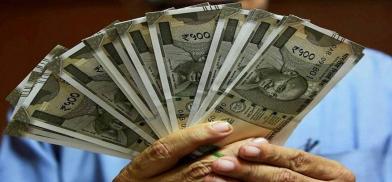How far is India from a $5 trillion economy?
However, progress towards a USD 5 trillion economy has so far been elusive. The goalposts are also shifting. Even at the scorching pace likely in 2021-22, the economy will hit USD 5 trillion only in 2025-26, writes N Chandra Mohan for South Asia Monitor

The official expectations of the Indian growth story is reminiscent of a popular French expression, the more things change, the more they remain the same. For all the socio-economic devastation of COVID-19 - with the economy likely to contract by 7.7 percent in 2020-21, according to the advance estimates of the National Statistics Office - the Economic Survey for 2020-21 expect the country will regain the pole position of the world’s fastest-growing large economy in the next two years. Deep down, the aspirational hope of becoming a USD 5 trillion economy remains very much alive and kicking among mandarins in North Block.
No doubt, the International Monetary Fund (IMFs) forecasts that India is likely to grow by 11.5 percent in 2021 and 6.8 percent in 2022 lend some credence to these expectations. In a global context, these upbeat numbers reflect a stronger than expected recovery in the economy after the nationwide lockdown to combat the viral pandemic was gradually eased. India’s response with three ‘Aatmanirbhar’ (self-reliant) stimulus packages amounting to Rs. 27 trillion was exemplary.
Infrastructure-led push for growth in budget
The infrastructure-led push for growth in the latest union budget for 2021-22 is expected to further strengthen the process of revival in a difficult international context. The prospect of a trade war between the two most powerful economies in the world, notably the US and China, has not receded with the new Joe Biden administration. The world economy is forecast to contract by 3.5 percent in 2020 and expand by 5.5 percent in 2021. Much of the global outlook is shrouded in “exceptional uncertainty” as new variants of the coronavirus continue to surge, leading to fresh lockdowns and logistical problems with vaccine distribution, notes the IMF.
In this milieu, the Indian economy contracted by 23.9 percent - perhaps one of the deepest in the world - during the April-June quarter of 2020-21. With the easing of perhaps the most stringent lockdowns and a gradual uptick in economic activities, there was a considerable improvement to a 7.5 percent negative growth in the July-September quarter.
Thus, during the first half of 2020-21, the Indian economy was in negative territory by 15.7 percent. Arithmetically, it is only if the damage is limited to a 0.1 percent contraction in the second half of 2020-21 that a minus 7.7 percent growth for the year as a whole is possible. That indeed is a big if.
Is rebound possible?
The Economic Survey, for its part, argues that a rebound is feasible: the agriculture sector has remained buoyant while contact-based services, manufacturing, and construction were hit the hardest during the lockdown. From July 2020 onwards, it discerns a “resilient V-shaped recovery” evident in second-quarter GDP numbers and “sustained resurgence” in high frequency indicators such as power demand, e-way bills, buoyant GST (Goods and Services Tax) collections and steel consumption. Although there has been limited progress in job creation, with declining labour force participation rates and higher unemployment, the pace of economic activities are picking up.
But how realistic is the Survey’s expectation that India will see the “highest growth rate since independence” of 11 percent in 2021-22? Firing from the shoulders of the IMF is no argument as its chief economist, Gita Gopinath, held this to be largely “mechanical” as the economy normalises after collapsing by 7.7 percent. That even if there is no further growth that happens after that recovery in 2020-21 quarter on quarter, you will have a very large number on what the growth is going to be for the year.
That over two years, the economy would be only 2-3 percent bigger when it’s usually 12 percent at this time - a gap of 9-10 percent that has to be filled
$5 trillion dollar economy
This is perhaps where the union budget is likely to contribute through higher capital expenditures on infrastructure. Most budgets seek to balance different objectives like boosting growth, higher spending on social objectives like improving farmer welfare,
providing housing, drinking water, and healthcare for all while remaining fiscally responsible. But Finance Minister Nirmala Sitharaman’s budget is betting on growth through a slew of measures to revive investments. In her speech, she noted that
manufacturing has to grow in double-digits to realize the National Democratic Alliance (NDA) regime’s vision for India to become a USD 5 trillion economy.
However, progress towards a USD 5 trillion economy has so far been elusive. The goalposts are also shifting. Even at the scorching pace likely in 2021-22, the economy will hit USD 5 trillion only in 2025-26. How feasible is double-digit growth in manufacturing when that sector’s share in the gross domestic product is steadily shrinking?
Things remain the same as all of this hasn’t prevented officialdom from talking up the growth story. There is no substitute for a more stable policy and regulatory framework. Factor markets of land, labour, and capital markets must be freed up. Conditions for doing business on the ground must be improved, besides other reforms.
(The writer is an economics and business commentator based in New Delhi. His views are personal. He may be contacted at nchandramohan@rediffmail.com)










Post a Comment